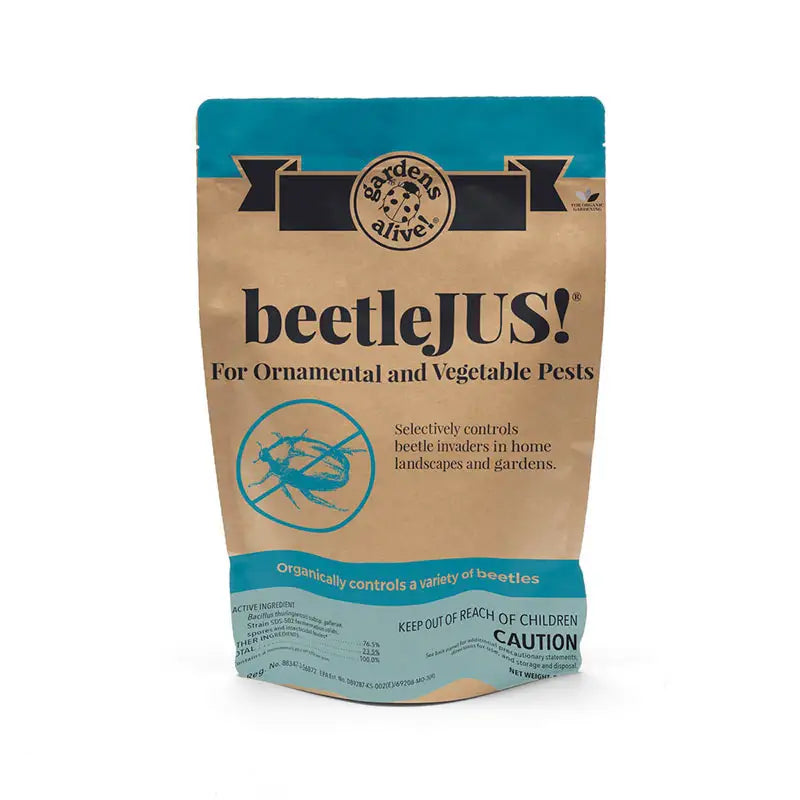Sap Beetles on Split and Cracked Tomatoes
Q: For the last three years, half-inch long slender black beetles have infested my tomatoes. Are they flea beetles? They only show up in August and only go after my tomatoes. They enter through any crack or bruise that happens, usually when the fruit is approaching ripeness, and can do a lot of damage. I have resorted to picking the fruit a little early, before the pests can get in there, and then allowing the tomatoes to ripen on my windowsill.
---David from Traverse City Michigan
A. Well, there's nothing wrong with harvesting tomatoes a little early and letting them finish ripening up inside—just NOT on a windowsill! Fruits don't need to be exposed to light to ripen—and direct sun can cause tomatoes to rapidly lose flavor. So can we please put this ancient but totally incorrect gardening advice to rest? The best way to ripen up green and/or half-ripe tomatoes is to let them sit out on your kitchen counter at room temperature and in ambient light.
Now back to our question. "Flea beetles"? Almost certainly not. Flea beetles are black, but they're really tiny—almost hard to see. And in my garden they're only a pest early in the season; and they've never gone after my tomatoes. Flea beetles are famous for attacking eggplant; making the leaves look like they were hit by lots of teeny tiny shotgun blasts.
Here's a link to a previous Question of the Week that offers some suggestions on their control, but we're not going to go into any flea beetle detail here, because David sent a follow-up email to let us know that that he had properly identified his pests as "sap beetles."
…Which I had never heard of, but did some research, and it looks like this ID is right on. It's a fairly large family of beetles with a variety of common names, like strawberry sap beetle and 'picnic beetle'. They're about a quarter of an inch long; typically do show up late in the season; and are felt to pretty much only show up on fruits that are already damaged—just as David has described..
That makes them like a lot of other pests that don't do the initial damage, but move in after the fruits are already compromised—like ants and millipedes. These and other "opportunistic pests" generally get all the blame because gardeners see them on the fruits. But an excellent online Bulletin from the University of Minnesota Extension stresses that these beetles are almost always only found on fruits that were already damaged--or simply overripe.
So all you have to do is not have any damaged fruit in your garden!
And good luck with that, especially at the end of the season, when almost every garden has some 'dead soldier' tomatoes on the ground attracting pests like this. But a clean garden IS the goal, especially if these little buggers have gotten used to coming around.
And all you need to initiate this 'cure' is one of the most important steps in basic gardening—the daily inspection. You want to visually check your plants every morning; harvest anything that's ready and remove any damaged or cracked fruits. If the damage is minor, cut the bad parts off and use the rest. If the fruit is really trashed, compost it in a closed container far away from the actual garden; or even better, use the damaged fruit to bait sap beetle traps.
Put your damaged fruits into a container that the beetles can easily fly into but not out of—like a yellowjacket trap or a quart sized jar with a small hole punched in the lid. Then hang the traps on the outskirts of your garden, not near the plants you're trying to protect. Just as with Japanese beetle traps, you don't want to lure the pests too close or they may choose the live plants over the traps.
And I would begin this defense early in the season. These beetles overwinter as adults and lay their eggs near rotting or fermenting fruit in the spring; so starting out with a squeaky clean garden is really important. Don't leave rotten tomatoes on the ground over winter!
I'd also urge people with this problem to build raised beds if they don't already have them; raised beds can help prevent the most common form of damage that attracts these pests--splitting. 'Splitting'—when the skin of a tomato splits open—is caused by uneven watering, especially when a deluge follows a drought, but poor drainage makes it much worse. And raised beds will always have superior drainage.
I'd also choose my varieties carefully.
You won't find tomatoes that are directly resistant to sap beetles, but a lot of varieties are resistant to the splitting and cracking that attracts these and other 'opportunistic' pests. Splitting occurs when the skin of the fruit can't expand as fast as the inner part of the growing tomato—but some varieties are naturally better at resisting this problem.
And many varieties naturally resist developing those big cracks around the very top of the fruit near the stem. Read catalog descriptions carefully, and look for varieties that say they're 'resistant to cracking and splitting'.
After a couple of seasons of growing tomatoes that hold together better, the cycle of sappiness should be broken.
If only the same could be said of me….


